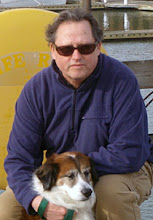WHAT IS A SUSTAINABLE, GREEN AND/OR A NATURAL FRAGRANCE?, Reed Doyle, Director of Strategic Sourcing, Seventh Generation
Like the opening speaker, Reed quickly demonstrated original, thought provoking, compelling statements while he shared his journey and how it married well when seeking improvement with Seventh Generation. Establishing standards such as "do less bad", seek to ask the right questions, don't bargain with yourself, and it's about health and wellness (stupid) guides them.
Mr. Doyle helped to explain how/ why they are leaders in their categories by understanding public perception drives shelf movement, therefor they developed custom "natural" formulas. They look for point of sale differences; not try to act like competition; and use green standards as guidelines to often exceed.
Exceeding guidelines can develop a lack of trust with self regulated agencies as represented by the conference's co-chairs as Seventh Generation wants full disclosure and questions vendors about numerous data gaps. Reed did say that eventually all vendors do disclose in particular as his company create their own benchmarks for continuous improvement like eliminating impurities.
Do download this speech when available.
THINGS WE NEED TO REMEMBER ABOUT THE BASIC SCIENCE OF POISONS, Ladd Smith, President, RIFM, US
Ladd gave an extremely well versed presentation. He spoke how everything is a potential poison, on RIFM's risk assessment standards, and testing is based on human biology.
A large question posed was are we tolerant of naturally occurring hazards? This eventually lead to the new perspective of holistic ecology. [reminder to download this speech]
As this was the second mention of holistic ecology, The Green Nose surmised how this idology shift does not change RIFM's previous positions and humbly keeps them relevant. So many outcomes when embracing diversity even scientific diversity!
DESIGNING SUSTAINABLE FRAGRANCES, co-presenters Michelle Harper, Director of Fragrance Evaluation, Cynthia Reichard, ExecVP Client Services, Arylessence Inc
Outstanding presentation on evaluating your sustainable message, melding it to current trends and justifications for defending the use of fragrances. As this was marketing specific, I suggest this be downloaded or visit their website.
Both speakers sent positive sustainability messages and are seeking well intended outcomes.
AN IN VITRO SCREENING SYSTEM THAT IDENTIFIES SKIN SENSITIZATION, Jim McKim, Chief Science Officer, Ceetox
I found the talk amazing and an demonstration how advanced skin testing has recently become in order to eliminate animal testing. Jim highlighted numerous benefits to their techniques which includes, time, cost, animal saver; fills REACH data gaps quicker; meets EU requirements; an ethical approach; satisfies consumer pressure; helps provide a marketing message and avoids uncertainty factors.
This testing method is more predictive for early events and other outcomes like airways. The system is consistent with previous benchmarks. It also provides a tiered assay approach, and can screen a larger number. Again please download and support this type of testing.
THE DERMAL SENSITIZATION QUANTITATIVE RISK ASSESSMENT (QRA) FOR FRAGRANCE INGREDIENTS, Anne Marie Api, VP HUMAN Health Sciences Program, RIFM
Dr. Api opened by discussing the EU banned allergen materials. These items will not harm the environment and the original researchers have announced their intent was only to identify items that should appear on labels, not to suggest a ban.
Anne Marie described the QRA approach which is available on the RIFM site and when the conference publishes the presentations. A change was noted that exposure will be evaluated by dose metric as dose per metric area.
There will also be some teeth in RIFM standards compliance with hard surface cleaners. Market samples will be evaluated and any non-compliant fragrance company will be posted on their website.
THE CONSUMER PRODUCT INGREDIENT COMMUNICATION INITIATIVE, Michelle Radecki, General Counsel, The Soap and Detergent Association
Ms. Radecki opened her presentation on the issue/ trend of fragrance transparency to counterpoint Mr Burr's justification. She offered that a skillful GC/MS does not completely reveal all the ingredients thus the formula should still be protected. [actually it reveals all of the molecules within a vapor range to +/- 95% identification] The current labeling law was enacted in 1974 and fragrances were granted an exception. The recent proposal by CA legislation SB509, proposed no exception for fragrances nor dyes. RIFM lobbied for an exception/ different agreement on behalf of it's membership.
Currently SDA is developing a model for responding to NGO's like Women's Voices for the Earth and Earth Justice. SDA can only encourage members to support the process.
Michelle's complete presentation will be available shortly.
COLLABORATION FOR SUSTAINABILITY, Suzanne McCormick, Director of Fragrance Development, Method, US and Colin McIntosh, Director Regulatory Affairs, Firmenich
Method developed a fragrance pilot collaboration in order to further it's corporate directive for a cradle to cradle process. The collaboration included a formula review process respecting the intellectual property protection for their vendors. Firmenich was the first house to participate which eventually included all of their fragrance suppliers. Suzanne felt the protocol went well enough to enact a fragrance switch.
Suzanne was asked if Method would release the protocol and she promised to ask management.
The program included reviews for toxicity, endocrine disruption, contact sensitization, CMR effects, bioaccumulation, and biodegradation.
With Firmenich, Method developed the criteria for biodegradation and bioaccumulation with acknowledgement of data gaps. Primary discussions included how the material dissipates and reviewing its multi-dimensional characteristics. Naturals were ok but the item would be eliminated if it didn't have a good profile. They stated the program took time to enact.
On questioning they stated they started with the original odor profile/ compound and revised accordingly.
It should be noted that Dr. William Troy, VP and General Manager of Product Safety & Regulatory at Firmenich could not co present due to a schedule conflict. Dr. Troy is also the president of FMA and serves on the RIFM board. The protocol seems consistent with the environmental positions championed by association spokespersons/ members on the Fragrance TAC. I hope it meets or exceeds the soon to be released DfE module.




